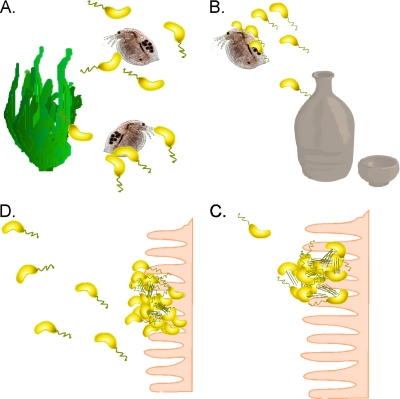FIG. 4.
Cyclic transition of V. cholerae between the aquatic habitat and the human small intestine. (A) V. cholerae organisms persist in the aquatic environment as free-swimming, planktonic bacteria as well as bacteria bound to biotic and abiotic surfaces. (B) Ingestion of V. cholerae via contaminated food and water localize the bacteria to the small intestine. (C) Bacterial attachment to the epithelial surface is followed by virulence factor production, leading to sites of colonization from which CT is secreted, causing typical cholera symptoms. (D) Due to high localized cell density, the quorum-sensing system is activated. This leads to the repression of the expression of genes encoding virulence factors as well as activation of the expression of genes encoding secreted proteases that function to degrade attachment factors, such as GbpA, detaching bacteria to be released back into the aquatic environment.

